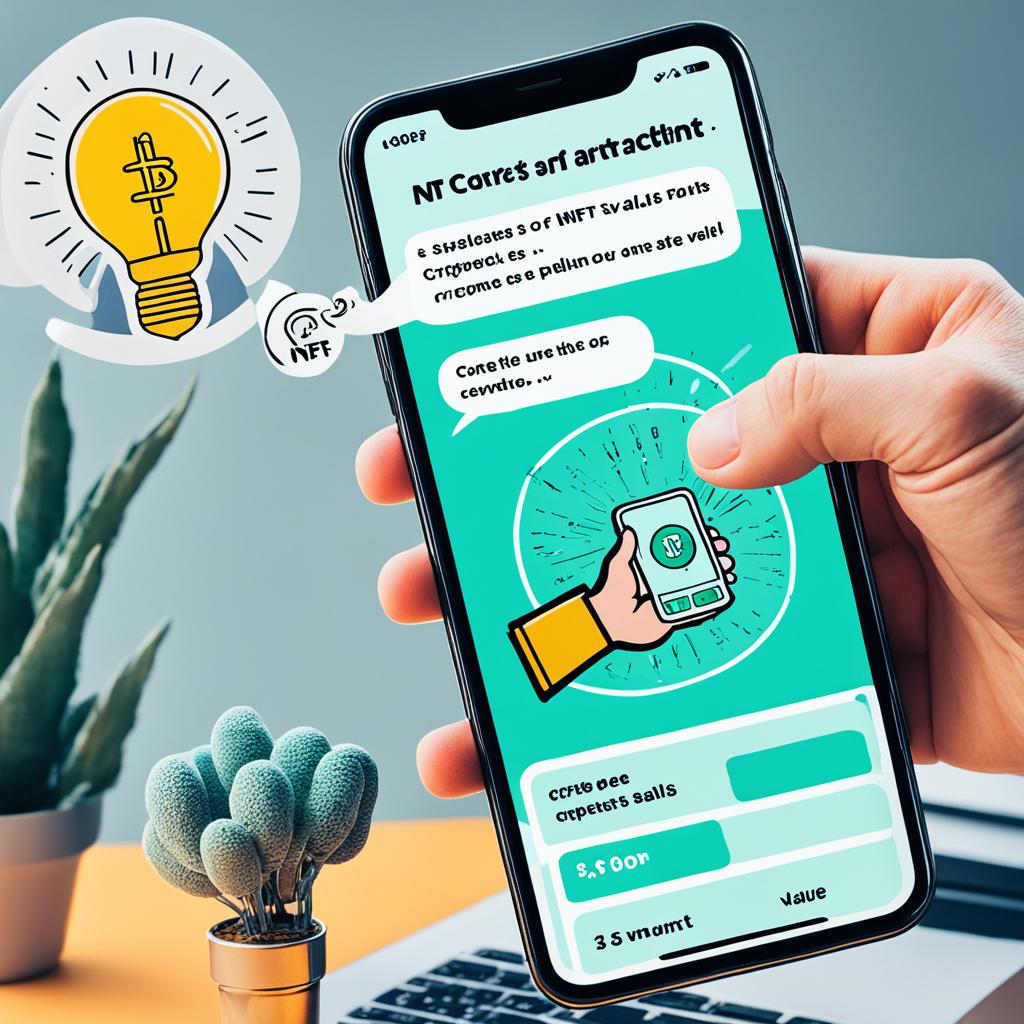The internet has revolutionized art trading, with artists now able to sell their digital art as non-fungible tokens (NFTs). NFTs are unique digital assets that cannot be copied or replicated, giving exclusivity rights to artists. NFTs can represent various types of digital art, such as images, paintings, songs, or music albums. These art pieces are stored on the blockchain, which is a secure online ledger. NFTs have become popular in the art world, offering artists a new way to monetize their work and reach a global audience.
Key Takeaways:
- NFTs are unique digital assets that give artists exclusivity rights.
- Artists can sell various types of digital art as NFTs, such as images, paintings, songs, or music albums.
- NFTs are stored on the blockchain, a secure online ledger.
- NFTs provide artists with a new way to monetize their work and reach a global audience.
- The popularity of NFTs has revolutionized the art trading industry.
What is an NFT?
Let’s dive into the fascinating world of NFTs. NFT stands for non-fungible token, and it has been making waves in the art world. But what exactly is an NFT? Well, simply put, an NFT is a digital asset that is unique and cannot be replicated.
Unlike cryptocurrencies, such as Bitcoin or Ethereum, which are fungible and can be exchanged on a one-to-one basis, NFTs represent one-of-a-kind items. They can be used to represent any form of creative work that exists in the digital world, including digital art, videos, music, virtual real estate, and more.
So, how does it work? NFTs are stored on the blockchain, which acts as a secure and transparent ledger. This means that ownership and transaction history of an NFT can be easily verified, providing artists and collectors with a level of authenticity and trust.
One of the remarkable aspects of NFTs is that they allow artists to sell their work directly to collectors, bypassing the need for intermediaries like galleries or auction houses. This opens up exciting possibilities for artists to showcase their talent, reach a global audience, and establish their own unique brand.
“NFTs have transformed the way artists can engage with collectors and monetize their work. It’s a game-changer in the art world.”
Moreover, NFTs give artists control over their intellectual property. They can decide how their art is used, reproduced, or modified. This level of control empowers artists to protect their work and ensures that they are appropriately compensated for their creations.
Besides the artistic merits, NFTs also offer financial opportunities. When an NFT is sold or resold, artists can earn royalties on the secondary market transactions. This means that as the value of an artist’s work increases, they can continue to benefit from its success in the long run.
Now that you have a basic understanding of what NFTs are, let’s explore further and discover the fascinating aspects of the NFT art world in this beginner’s guide.
Why are NFTs so popular in the art world?
In recent years, NFTs have gained immense popularity in the art world, revolutionizing the way art is created, bought, and sold. Here are a few reasons why NFTs have captured the attention of artists and collectors alike:
- Exclusivity and uniqueness: NFTs provide a way to create and own digital assets that are truly one-of-a-kind, giving artists and collectors a sense of exclusivity and uniqueness.
- Direct artist-to-collector interaction: NFTs enable artists to directly connect with their audience and establish a direct relationship with collectors, eliminating the need for intermediaries.
- New revenue streams: NFTs offer artists the opportunity to tap into new revenue streams by monetizing their digital creations through initial sales and ongoing royalties.
- Global reach: With NFTs, artists can transcend geographical boundaries and reach a global audience, allowing their work to be appreciated and collected by art enthusiasts worldwide.
- Authenticity and provenance: The blockchain technology behind NFTs ensures the authenticity and provenance of digital art, providing collectors with verifiable ownership and a transparent transaction history.
With all these exciting aspects, it’s no wonder that NFTs have become a significant phenomenon in the art world, opening up new possibilities and opportunities for artists and collectors.
NFT 101: 5 terms you need to understand
When diving into the world of NFT art, it’s essential to familiarize yourself with some key terms. Understanding these terms will help you navigate the digital art NFT space with confidence and make informed decisions about your artistic journey. Let’s explore five important terms every beginner should know:
- NFT: Non-Fungible Token, commonly known as NFT, is a unique digital asset that represents ownership or proof of authenticity for a specific piece of digital art or collectible. NFTs are stored on the blockchain, ensuring transparency and immutability.
- Blockchain: A blockchain is a decentralized digital ledger that securely records transactions across multiple computers. It acts as a transparent and tamper-proof record of ownership for NFTs, providing a layer of trust and accountability.
- Tokenized Art: Tokenization refers to the process of turning a physical or digital asset, such as a painting or digital artwork, into an NFT. Tokenized art allows artists to sell and transfer ownership of their creations digitally, enabling a new era of art ownership and trade.
- Minting: Minting is the process of creating and verifying an NFT on the blockchain. By minting an NFT, artists can authenticate and establish ownership of their digital art in the decentralized digital space.
- Smart Contracts: Smart contracts are self-executing contracts with predefined conditions written into the code on the blockchain. These contracts automatically execute transactions when specific conditions are met, allowing for secure and transparent interactions in the NFT marketplace.
By familiarizing yourself with these five essential terms, you’ll gain a better understanding of NFT art basics and be better equipped to explore the world of digital art NFTs with confidence.
| Term | Description |
|---|---|
| NFT | Non-Fungible Token, a unique digital asset representing ownership or proof of authenticity. |
| Blockchain | A decentralized digital ledger ensuring transparency and immutability. |
| Tokenized Art | The process of turning physical or digital assets into NFTs. |
| Minting | The process of creating and verifying NFTs on the blockchain. |
| Smart Contracts | Self-executing contracts with predefined conditions written into the blockchain code. |
Understanding these terms will empower you to navigate the world of NFT art and make informed decisions as you embark on your digital art NFT journey.
Get an NFT logo to establish yourself as a seller
As an aspiring NFT artist, it is crucial to build a strong brand that resonates with buyers and establishes your credibility in the market. One effective way to achieve this is by creating an eye-catching NFT logo. Your logo serves as a visual representation of your artistic style and can help differentiate your brand from others in the competitive world of NFT art.
Having a unique and visually appealing logo enhances your overall brand image and makes your digital art more desirable to collectors. It showcases your professionalism and attention to detail, capturing the essence of what makes your artwork special.
Fortunately, there are online logo makers like LOGO.com that offer free logo designs specifically tailored for NFT artists. These platforms provide intuitive tools and customizable templates to help you create a logo that reflects your artistic vision and resonates with your target audience.
- Choose a style: Decide on a style that aligns with your artwork and brand identity. Whether you prefer minimalist designs, bold and vibrant visuals, or intricate illustrations, finding a style that represents your artistic voice is essential.
- Think about scalability: Your logo should look great and remain recognizable at different sizes. Make sure it works well as a small icon or a larger banner.
- Use relevant symbols: Incorporate symbols or imagery that are relevant to your art or personal branding. This creates a visual connection that helps collectors remember your work.
- Choose harmonious colors: Select colors that harmonize with your art and evoke the right emotions. Color psychology plays a significant role in how people perceive and connect with visual elements.
A visually appealing and well-designed NFT logo can make a lasting impression on potential buyers, attracting them to explore your artwork further. It establishes your professionalism and commitment to your craft, setting you apart from other sellers in the NFT art market.
8 steps on how to sell NFT art and rake in the big bucks
Selling your digital art as NFTs can be an exciting and profitable endeavor. To help you get started on your journey, here are eight essential steps to guide you through the process:
- 1. Create and showcase your artwork: Start by creating high-quality digital art that represents your unique style and vision. Build a portfolio and select the pieces you want to sell as NFTs.
- 2. Set up a digital wallet: Choose a reliable digital wallet that supports NFT transactions. This wallet will store your NFTs and allow you to send, receive, and manage your digital assets securely.
- 3. Choose the right NFT marketplace: Research different NFT marketplaces and select the platform that aligns with your artistic goals and target audience. Popular NFT marketplaces include OpenSea, Rarible, and SuperRare.
- 4. Mint your NFTs: Minting is the process of creating and verifying your digital artwork as an NFT on the blockchain. Follow the instructions provided by your chosen marketplace to mint your NFTs.
- 5. Set the price and royalties: Determine the price for your NFTs and consider adding royalties, which entitle you to a percentage of future resales. Set fair prices that reflect the value of your artwork and the current market trends.
- 6. Market and promote your NFTs: Utilize social media platforms, art communities, and your existing network to create buzz around your NFTs. Engage with potential buyers, share your artistic process, and highlight the unique features of your digital art.
- 7. Engage with your collectors: Building a community of collectors is crucial for long-term success. Foster relationships with your buyers, offer exclusive perks, and communicate regularly to maintain their interest and support.
- 8. Stay informed and adapt: The NFT market is dynamic and ever-evolving. Stay updated with the latest trends, emerging platforms, and collector preferences. Adapt your strategies accordingly to maximize your chances of success.
By following these steps, you can navigate the world of NFT art and unlock the potential to earn significant income from your digital creations.
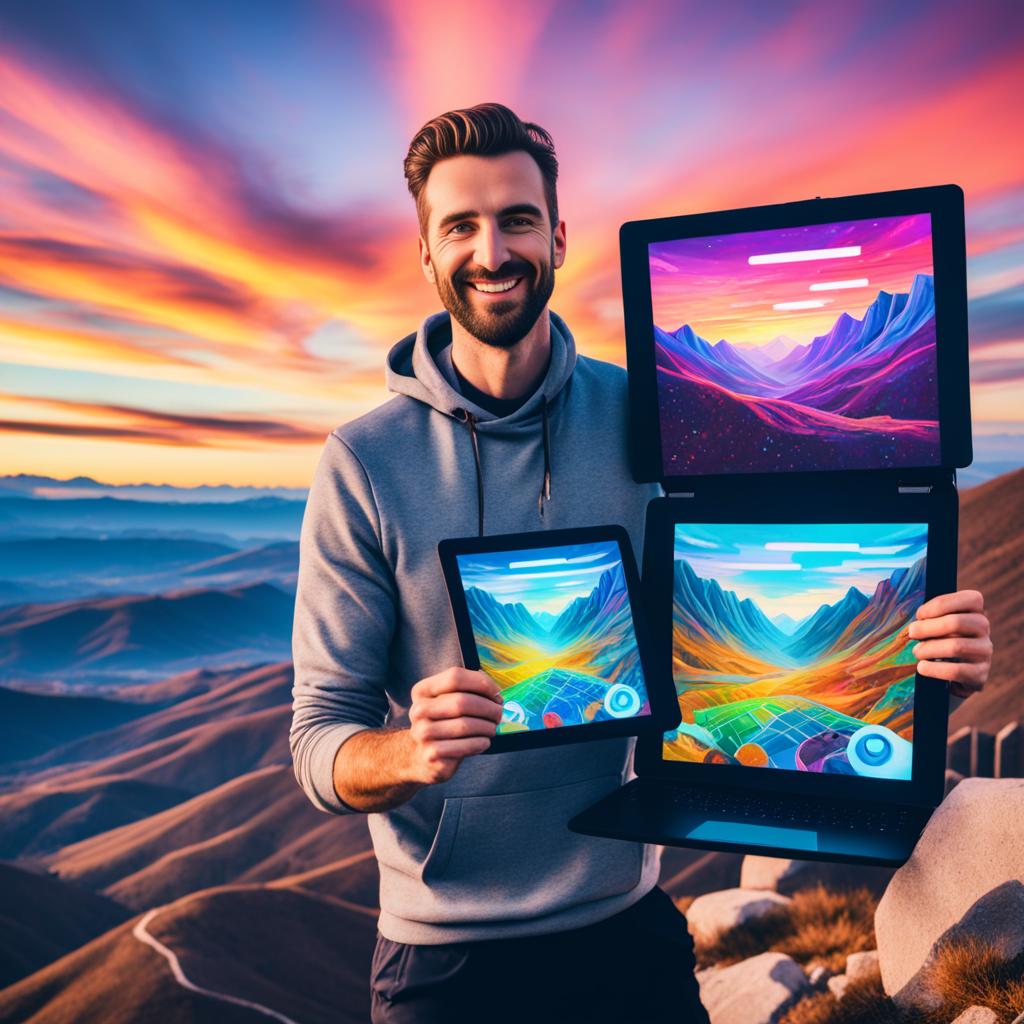
How to make and sell an NFT: a word of caution
When it comes to the NFT market, it’s natural to be excited about the potential for lucrative sales. However, it’s crucial to approach this emerging space with caution. While high-profile NFT sales have garnered attention, they represent only a small portion of overall NFT sales. For most artists, NFT art sells for prices that are similar to traditional art sales. It’s important to set realistic expectations and understand that not every NFT will sell for astronomical amounts.
One key consideration when making and selling NFTs is the fees associated with the process. These fees include creating, minting, and selling NFTs. Additionally, there are gas fees, which are transaction fees on the blockchain, that can fluctuate and impact your overall costs. It’s essential to conduct thorough research and understand the fees involved before diving into the NFT market.
To help you manage your expenses effectively, here are some tips:
- Educate Yourself: Take the time to thoroughly understand the concepts and mechanics behind NFTs. Familiarize yourself with the blockchain technology, smart contracts, and the specific platform you plan to use for minting and selling your NFTs.
- Budgeting: Consider the costs associated with creating and promoting your NFT art. Factor in the platform fees, gas fees, marketing expenses, and any other costs that may arise. Determine a budget that aligns with your goals and resources.
- Market Research: Explore the current NFT market trends and analyze similar artwork to get an idea of the value and demand for your creations. This research can help you set competitive prices for your NFTs.
- Strategic Timing: Consider the timing of your NFT releases. Understanding the market patterns and leveraging relevant events or trends can help maximize your chances of attracting buyers and generating interest in your art.
- Building a Community: Engage with the NFT community and art enthusiasts through social media, forums, and online platforms. Building a strong network can help increase visibility, gain valuable feedback, and attract potential buyers for your NFT art.
By approaching the NFT market with caution, conducting thorough research, and effectively managing your expenses, you can navigate the world of digital art NFTs with confidence.
The Importance of Market Research
Market research plays a crucial role in determining the value and demand for your NFT art. By analyzing similar artworks and studying market trends, you can gain insights that inform your pricing strategy and maximize your chances of success. Regularly monitoring the NFT market and adjusting your approach accordingly can help you stay competitive and adapt to evolving buyer preferences.
“Market research allows you to understand the current trends and demands in the NFT art market. By gaining insights into what collectors are looking for, you can tailor your creations and pricing to attract potential buyers.”
The Benefits of Building a Community
Building a community around your NFT art can significantly impact your success as an artist. Engaging with fellow artists, collectors, and enthusiasts fosters valuable connections and exposure. By actively participating in social media conversations, forums, and online platforms dedicated to NFT art, you can establish your presence, gain feedback, and attract potential buyers to your artwork.
“Creating a strong community around your NFT art allows you to build a loyal following of supporters. This network can help generate buzz, spread the word about your artwork, and increase the chances of successful sales.”
The Road to NFT Success
Embarking on the journey of making and selling NFTs can be an exciting and rewarding experience. However, it’s essential to approach it with careful consideration and thorough planning. By setting realistic expectations, understanding the fees involved, conducting market research, and building a supportive community, you can increase your chances of success in the digital art NFT market.
| Key Tips for Success in the NFT Market |
|---|
| Set realistic expectations |
| Educate yourself about NFTs and the blockchain |
| Budget effectively |
| Conduct thorough market research |
| Consider strategic timing for NFT releases |
| Engage with the NFT community |
How to make and sell an NFT
Making and selling an NFT can be an exciting venture for digital art beginners. Here’s a simplified guide to help you get started:
1. Create a Digital Wallet
To participate in the world of NFTs, you’ll need a digital wallet to store and manage your digital assets. There are various digital wallet options available, such as MetaMask and Coinbase Wallet. Choose a wallet that is compatible with the blockchain platform you’ll be using to mint your NFTs.
2. Choose a Blockchain Platform
There are different blockchain platforms that support NFT creation, with Ethereum being the most popular one. Research and select a blockchain platform that aligns with your goals and fits your budget. Keep in mind that some platforms may have higher transaction fees or different minting processes.
3. Create and Mint Your NFT
Now it’s time to unleash your creativity and create your digital artwork. Whether it’s a digital painting, illustration, animation, or music, the possibilities are endless. Once your artwork is ready, you’ll need to mint it as an NFT on the chosen blockchain platform. Minting converts your digital art into a unique token on the blockchain, giving it authenticity and exclusivity.
4. Set a Price and Choose a Marketplace
Determine the price for your NFT based on factors such as your reputation as an artist, the demand for your artwork, and the perceived value of your creation. Research NFT marketplaces, such as OpenSea, Rarible, or Foundation, and choose a platform that suits your needs. Each marketplace has its own requirements and fees, so make sure to read the guidelines carefully.
5. List and Promote Your NFT
Once your NFT is minted and listed on a marketplace, it’s time to promote your artwork. Leverage social media platforms, art communities, and online forums to showcase your NFT and captivate potential buyers. Engage with your audience, share the story behind your artwork, and build a community around your brand. Authenticity and connection with your audience can significantly impact your NFT sales.
6. Complete the Sale and Transfer Ownership
When a buyer shows interest in purchasing your NFT, the transaction will take place on the blockchain. Ensure that all payment details and transfer of ownership are properly executed. Follow the instructions provided by the marketplace to transfer the NFT to the buyer’s digital wallet, and receive the payment in cryptocurrency.
“Creating and selling NFTs is a thrilling journey that allows artists to embrace the digital art revolution and connect with collectors worldwide.” – Your Name
| NFT Creation Steps | Key Considerations |
|---|---|
| Create a Digital Wallet | Choose a secure wallet compatible with your chosen blockchain platform. |
| Choose a Blockchain Platform | Research different platforms, considering transaction fees and minting processes. |
| Create and Mint Your NFT | Unleash your creativity and convert your digital art into a unique NFT token. |
| Set a Price and Choose a Marketplace | Determine the value of your artwork and select a suitable NFT marketplace that aligns with your goals. |
| List and Promote Your NFT | Utilize social media, online communities, and forums to showcase and market your NFT. |
| Complete the Sale and Transfer Ownership | Execute the transaction on the blockchain and transfer the NFT to the buyer’s wallet. |
By following these steps, you’ll be on your way to making and selling your digital art as NFTs. Remember to stay creative, connect with your audience, and embrace the ever-evolving world of digital art.
How are NFTs made and sold?
Creating and selling digital art NFTs involves a straightforward process that can open up new opportunities for artists. To help you navigate the world of digital art NFTs, here are the key steps:
-
Choose your digital art : Start by creating a unique and visually appealing digital artwork that you want to sell as an NFT. It can be an image, a video, a music composition, or any other form of digital art.
-
Create a digital wallet : A digital wallet is required to store your NFTs. There are various cryptocurrency wallets available, such as MetaMask or Trust Wallet, that support NFT transactions. Install a compatible wallet and set it up with the necessary security measures.
-
Select an NFT marketplace : Choose an NFT marketplace platform to list and sell your digital art NFTs. Popular options include OpenSea, Rarible, and SuperRare. Each marketplace has its own submission requirements and fee structures, so research and select the one that aligns with your needs.
-
Mint your NFT : The process of minting your NFT involves uploading your digital artwork to the chosen marketplace. This creates a unique token representing your artwork on the blockchain. You’ll need to provide details such as the title, description, and any additional attributes you want to associate with your NFT.
-
Set a price : Determine the price at which you want to sell your NFT. Consider factors like the demand for your artwork, your reputation as an artist, and the current market trends. You can list your NFT at a fixed price or opt for an auction-style listing.
-
Pay the fees : NFT marketplaces typically charge fees for creating and listing NFTs. These fees can vary and may include gas fees, which cover the cost of blockchain transactions. Be sure to review the fee structure of your chosen marketplace and budget accordingly.
-
Market and promote your NFT : Once your NFT is live on the marketplace, it’s essential to market and promote it to attract potential buyers. Leverage social media platforms, art communities, and your personal network to showcase your digital art and generate interest in your NFT.
-
Manage your sales : Keep track of your NFT sales and engage with buyers. Deliver any associated digital files or extras promised with your NFTs promptly. Continuously evaluate your sales performance and adjust your strategy as needed to enhance your success in the NFT market.
Remember, the NFT market is dynamic and ever-evolving. Stay informed about the latest trends and developments, and continue to refine your digital art to capture the interest of collectors.
Success Story:
“I started my journey as a digital artist selling NFTs with a passion for creating vibrant and immersive artworks. By following these steps and honing my skills, I’ve been able to build a successful brand and connect with collectors from around the world. The NFT market has provided me with a unique platform to showcase my creativity and monetize my art in a way that was never before possible. Don’t be afraid to dive into this exciting world; you never know what opportunities await!”
Now that you have a clear understanding of how NFTs are made and sold, you’re ready to embark on your journey as a digital artist in the NFT space. Keep exploring the possibilities and let your creativity soar!
| Key Steps | Benefits | Challenges |
|---|---|---|
| Create your digital artwork | Showcase your creativity | Competition from other artists |
| Set up a digital wallet | Securely store your NFTs | Understanding blockchain technology |
| Choose an NFT marketplace | Access a global audience of buyers | Researching and comparing marketplace options |
| Mint your NFT | Create a unique token on the blockchain | Providing accurate and appealing NFT details |
| Set a price | Potentially earn revenue from sales | Pricing competitively |
| Pay the fees | Access marketplace features and services | Budgeting for associated costs |
| Market and promote your NFT | Expand your reach and attract buyers | Evaluating marketing strategies |
| Manage your sales | Build relationships with buyers | Providing excellent customer service |
Are NFTs profitable?
While some high-profile NFT sales have gained media attention, it’s important to understand that not all NFTs yield massive profits. The profitability of NFTs depends on various factors, including the demand for your artwork, the reputation of the artist, and the overall market conditions. Many NFT art pieces sell for prices comparable to traditional art sales. However, one advantage of NFTs is the potential to earn royalties on future sales of your NFTs. This can provide a continuous source of income as your artwork gains value. It’s important to approach NFTs with a realistic expectation of profitability and to focus on creating unique and high-quality artwork that resonates with collectors.
Explore NFT creation through SMU
If you’re looking to dive deeper into the world of digital art NFTs and enhance your skills as a creator, Southern Methodist University (SMU) offers an exceptional opportunity. SMU’s Master of Arts (M.A.) in Creative Technology program provides comprehensive coverage of various aspects of NFT creation, making it an ideal choice for beginners in the digital art NFT space.
Under the guidance of esteemed professor Ira Greenberg, the program delves into the exciting realms of generative art and AI art within the NFT domain. By enrolling in this program, aspiring artists have the chance to explore the intriguing possibilities of connecting generative art with generative AI, creating unique and innovative digital art pieces that resonate with collectors.
Through SMU’s M.A. in Creative Technology program, students gain valuable insights and expertise that go beyond the basics of NFT art. They acquire the necessary skills to unlock the true potential of digital creations in the NFT market. By blending artistic creativity with technological advancements, students can develop a strong foundation in NFT creation, equipping themselves with the tools needed for success in this dynamic and evolving field.
With SMU’s emphasis on hands-on learning and industry collaboration, students have the opportunity to engage with experts and professionals from the NFT art community. This exposure enhances their understanding of the market trends, best practices, and emerging technologies, enabling them to stay ahead of the curve and create compelling digital art that captivates collectors worldwide.
Why Choose SMU’s Creative Technology Program?
- Expert-led instruction by Professor Ira Greenberg, a renowned name in the field of creative technology.
- A comprehensive curriculum covering various aspects of NFT creation and its intersection with generative art and AI.
- Practical hands-on learning experiences that allow students to apply theoretical concepts in real-world scenarios.
- Access to industry networks and collaborations, fostering connections with fellow artists, professionals, and potential buyers.
- Exposure to the latest advancements and trends in the NFT art market, ensuring students stay at the forefront of this rapidly evolving space.
Embark on your journey into the world of digital art NFTs by joining SMU’s M.A. in Creative Technology program. Develop your skills, unleash your creativity, and make your mark in this exciting realm of NFT art.
Conclusion
Selling your digital art as NFTs can be a game-changer for artists looking to monetize their work and reach a global audience. As a beginner in the world of digital art NFTs, it’s crucial to grasp the basics of this exciting market. Creating a digital wallet, choosing the right NFT marketplace, and minting your NFTs are essential steps to get started.
However, it’s important to approach the NFT market with caution. Conducting thorough research and understanding the fees involved will help you manage your expenses effectively. While the profitability of NFTs can vary, focusing on creating unique and high-quality artwork increases your chances of success.
With dedication and creativity, you can navigate the world of digital art NFTs and embark on a profitable and fulfilling artistic journey. Keep exploring, stay informed, and continue to refine your craft. Selling your digital art as NFTs opens up an exciting new world of opportunities, allowing you to showcase your talent, connect with collectors, and establish your presence in the digital art community.
FAQ
How can I sell my digital art as NFTs?
What is an NFT?
What are some key terms I should understand about NFTs?
How can I establish myself as an NFT artist?
What are the steps to sell NFT art and make profits?
What should I be cautious about when making and selling NFTs?
How can I make and sell an NFT?
Are NFTs profitable?
How can I explore NFT creation through SMU?
Source Links
- https://logo.com/blog/how-to-sell-nft-art
- https://www.creativebloq.com/how-to/make-and-sell-an-NFT
- https://www.smu.edu/meadows/newsandevents/news/2023/how_to_create_and_sell_nfts
Money posts:
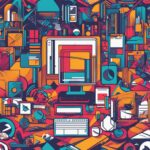 Best Freelance Graphic Design Niches For High Profit (2024)
Best Freelance Graphic Design Niches For High Profit (2024)
 How To Create Passive Income Streams With Digital Assets (2024)
How To Create Passive Income Streams With Digital Assets (2024)
 Masterworks Review | Easily Invest in Fine Art
Masterworks Review | Easily Invest in Fine Art
 How to Become a Freelance Artist in 2024
How to Become a Freelance Artist in 2024
 How To Invest In Bitcoin: A Beginner’s Guide (2024)
How To Invest In Bitcoin: A Beginner’s Guide (2024)
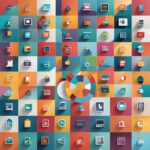 11 Best Online Selling Sites & Marketplaces (2024)
11 Best Online Selling Sites & Marketplaces (2024)
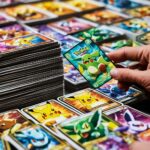 Selling Pokémon Cards: A Beginner’s Step-by-Step Guide
Selling Pokémon Cards: A Beginner’s Step-by-Step Guide
 23 Best Places To Sell Used Furniture & Make Money Fast! (2024)
23 Best Places To Sell Used Furniture & Make Money Fast! (2024)
